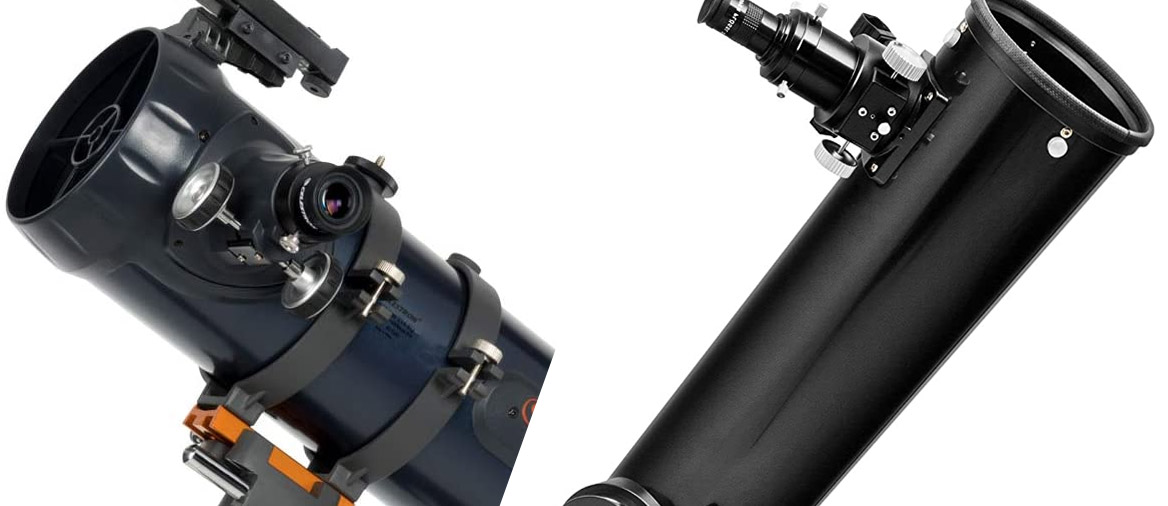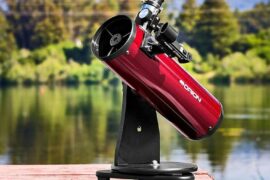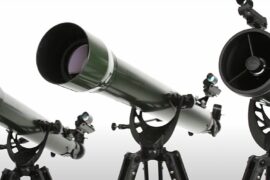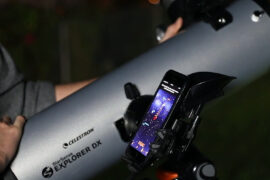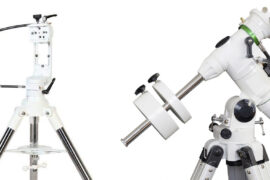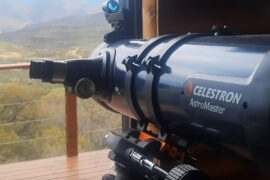One of the first decisions you have to make when you are on the market for a new telescope is what type of device is a better fit for your needs.
Two of the most common types you will hear about are Dobsonian and Newtonian telescopes. But understanding what’s the difference between them and figuring out which one is better for your particular use case can be confusing if you are just starting out.
It is important to make it clear from the start that both types are great, especially if you are looking for high-powered instruments. None is really better than the other and each has their own advantages and disadvantages. Your decision between them will be based on how you plan to use the telescope, your budget, and ease of use.
In this article, we’ll compare Dobsonian vs Newtonian telescopes and look at their differences, similarities, pros, and cons so you can make an informed decision.
Dobsonian and Newtonian telescopes
Both Dobsonians and Newtonians are subtypes of the same general category called reflecting telescopes. Reflecting telescopes, or reflectors were invented by Sir Isaac Newton as a cheaper and more powerful alternative to the classic design of refracting telescopes.
Reflectors use mirrors instead of lenses and have an open design with the primary mirror at the back of the tube instead of the front. As a result, they can be larger and cheaper to make than other designs. They also fix the chromatic (color) and spherical errors often seen in refractors. The tradeoff, however, is that they require maintenance to align the mirrors and constant cleaning because of the open tube design, and they can lose a bit of brightness. We have an in-depth explanation of all of this in our post about the pros and cons of reflecting telescopes.
Both Dobsonian and Newtonians then share some of the same objectives. The point of both is to maximize the aperture of the telescope to capture the highest amount of light possible and get very detailed images and a powerful device.
The inner design of both types is pretty much the same. It’s a large tube with a mirror on the back that reflects the light to a secondary mirror placed inside the tube and that is being held by a spider. The secondary mirror then reflects the light to the exit point.
The following diagram hopefully makes things clearer.
So, if they are so similar, what’s the difference? well, answer that.
Dobsonian vs Newtonian differences
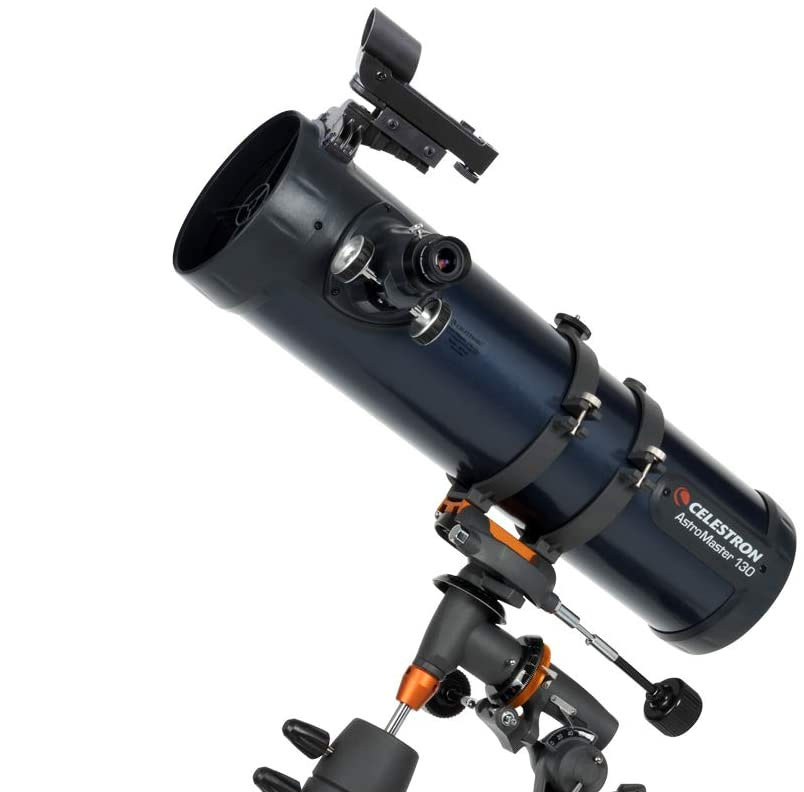
There are three main differences between Dobsonian and Newtonian telescopes. The type of mount they use, the lack of a tripod in Dobsonians, and the length of the tube.
Dobsonians have two purposes. Maximize the aperture (diameter) of the main mirror to increase the power/magnification of the telescope, and use a simple design that is cheap and easy to manufacture. As a result, Dobs are very popular in the DIY stargazing community because you can make your own with relative ease and for cheap.
Due to this, Dobsonians put aside the classic idea of using a telescope on top of a tripod, and instead replace it with a very simple rotating base that is easier to make, is more stable, and can support more weight.
The tradeoff is that Dobsonians have to use Alt-Azimuth mounts, instead of the Equatorial mounts that Newtonians use.
Alt-Azimuths (AZ) are basic mounts that allow you to move the tube in two axes (up-down and left-right). They are very easy to use, but they are less precise and are bad at tracking moving objects.
Equatorial mounts (EQ) are slightly more complicated to use, but they offer more precision and advanced features. They can be aligned with the rotational axis of the Earth, allowing them to pseudo-automatically keep track of an object in the sky. This makes them perfect for astrophotography and other use cases.
A clear advantage of Newtonians over Dobsonians is portability. Dobsonians are big, clunky, and hard to move around. Newtonians can be unmounted, thrown into a bag, and taken to the field.
Finally, Dobs have a longer focal length since they don’t need to limit due to being on top of a tripod. This reduces their field of view, which is good for observing nearby objects that can be appreciated at high magnifications, like planets or the Moon.
So, to summarize, here are the differences between Dobsonians and Newtonians
- Newtonians use a tripod, Dobsonians don’t
- Newtonians generally use precise Equatorial mounts (although they can also use AZ if for some reason you want to replace them). Dobsonians can only use an Aalt-Azimuth mechanism.
- Dobsonians are generally larger and can reach higher magnifications.
- Newtonians are easier to travel with and store. Dobsonians are heavy and clunky.
- Dobsonians are cheap to make if you are willing to try making your own telescope.
- Dobsonians have large focal lengths, helping them make good use of their high power to observe planets.
Dobsonian pros and cons
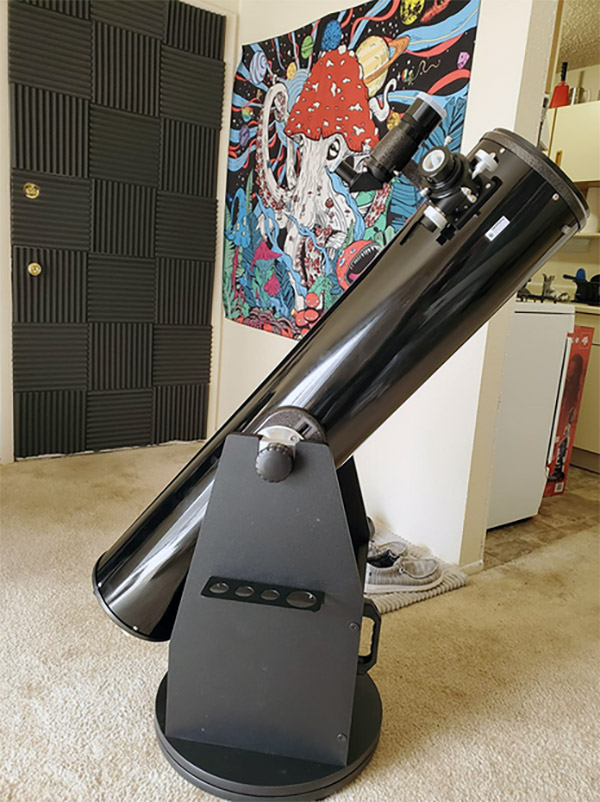
| Pros | Cons |
|---|---|
| Excellent price | Clunky and heavy |
| High-powered | Requires maintenance |
| Easy to use | Low precision |
| No chromatic errors | Hard to clean |
| Easy to make your own | Not many models on the market |
| Requires dedicated storage space | |
| Shipping can be expensive if buying online |
Newtonian pros and cons
| Pros | Cons |
|---|---|
| Excellent price | Harder to use |
| High-powered | Requires maintenance |
| No chromatic errors | Can show comas |
| Very precise when used with an EQ mount | Hard to setup for kids |
| Plenty of brands and models to choose from |
Which one should you choose?
In terms of image quality, Newtonians and Dobsonians are very similar. Assuming similar brands and quality, both types are going to have a comparable price per inch of aperture ratio so this shouldn’t be your main concern.
The biggest factor that you should consider when choosing between a Dobsonian and a Newtonian is how you plan to use them. Here are some questions that you might want to ask yourself and which one is a better fit for each.
How much portability do you need?
winner: Newtonians
Do you want to favor ease of use?
winner: Dobsonians
Do you want to get into astrophotography?
winner: Newtonians
Are kids going to use it?
winner: Dobsonians
The budget should also be a consideration. While both designs have similar costs in terms of price-to-aperture, Dobsonians are only available starting start at apertures of 150mm (6 inches) while there are Newtonians in the 114mm (4.5mm) to 150mm range.
As for specific model recommendations, check out this post with the best reflector telescopes for beginners that includes both Dobsonians and Newtonians.
Summary
- Dobsonian and Newtonian telescopes are both types of reflecting telescopes and in general use the same design.
- The difference between Newtonians and Dobsonians lies in their portability, type of mount, and use of a tripod.
- Both designs are good options with similar advantages. Choose depending on how you plan to use your telescope.
Enjoyed this article?
Get daily 10-minute PDFs about astronomy to read before bed!
Sign up for our upcoming micro-learning service where you will learn something new about space and beyond every day while winding down.

